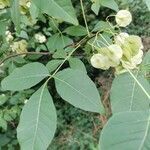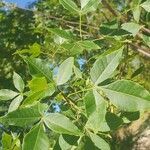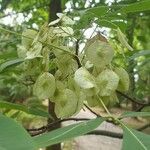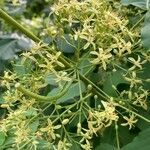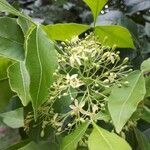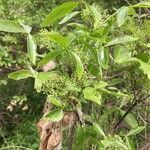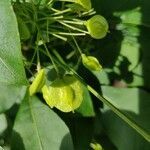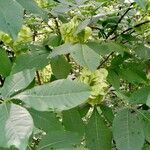A very small tree. It grows up to 8 m tall. The trunk is 15 cm across. The trunk is often branched. The crown is irregular and rounded. It loses its leaves during the year. The leaves are alternate and compound. There are 3 leaflets and the main stalk is 10-15 cm long. The leaflets are 10-15 cm long. They have a sharp point. They narrow below the middle. The upper surface is dark shiny green and it is paler underneath. It has a lemon smell when crushed. The flowers are small and greenish-white. They are in clusters at the tips of the shoots. The male and female flowers are separate usually on separate trees. The fruit are flat and 1-2 seeded. There is a wing around the seed case. This is 25 mm across.

